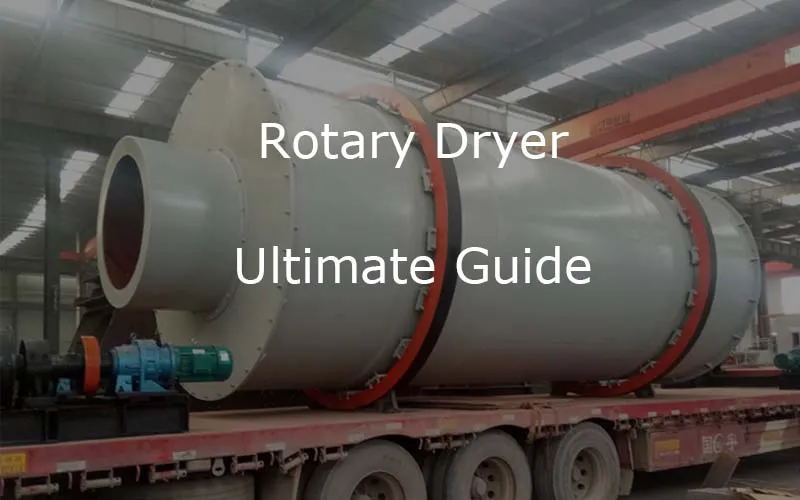
Máquina de secar: o melhor guia de compra
Este é um guia de compra abrangente sobre máquinas de secar, mas mais especificamente, falaremos sobre a máquina de secar rotativa. Portanto, se você planeja comprar uma máquina de secar, este será o seu guia definitivo. Apenas brevemente, abaixo está o que iremos cobrir ao longo do artigo:
Tabela de conteúdo
- O que é uma máquina de secar rotativa?
- Como funciona uma máquina de secar rotativa?
- O princípio por trás da máquina secadora rotativa
- Tipos de máquinas de secar
- Fornos rotativos vs. Secadores rotativos: qual é a diferença?
- Diferença entre o secador rotativo e o secador centrífugo
- Benefícios de usar um secador rotativo
- Perguntas Frequentes
- Apresentando a Máquina Secadora Rotativa Tcpel
- ponto de partida
O que é uma máquina de secar rotativa?
Um secador rotativo é uma máquina projetada especificamente para reduzir o teor de umidade do material por meio do contato direto com um gás aquecido.
As máquinas secadoras são feitas de tubos cilíndricos que são suportados por vigas de aço ou colunas de concreto. Normalmente, uma máquina de secagem rotativa se inclina ligeiramente para tornar a extremidade de descarga mais baixa do que a extremidade de alimentação do material.
Quando você coloca o material que deseja secar em uma máquina de secar rotativa, a máquina de secar começa a girar. O material será então levantado por várias aletas internas do secador rotativo.
Quando o material do secador rotativo estiver alto o suficiente para rolar para trás, ele cairá para o fundo do secador rotativo enquanto passa pelo gás quente.
Os secadores rotativos são os melhores para secar materiais metálicos e não metálicos, argila e lodo de carvão. A beleza dos secadores rotativos é que eles podem ser usados para secar diferentes materiais além dos listados acima. Além disso, os secadores rotativos são relativamente simples de usar.
Como funciona uma máquina de secar rotativa?
Os secadores rotativos giram os materiais em um tambor rotativo enquanto fazem uso justo do ar de secagem. Para tornar esse processo suave, o tambor é inclinado horizontalmente para permitir que o impulso gravitacional mova os materiais. Mas essa não é a única maneira de usar um secador rotativo. Em alguns casos, pode-se aquecer indiretamente o secador rotativo para que não entre em contato com o material.
Enquanto o tambor gira, os materiais são recolhidos e jogados na corrente de ar pelas lâminas de elevação para garantir uma boa transferência de calor. Geralmente, há a vantagem adicional de polir e arredondar os grânulos ainda melhor se você trabalhar com aglomerados.
Algumas coisas a ter em mente é que, ao secar materiais usando um secador rotativo, os materiais sempre se moverão conforme o cilindro gira. Além disso, à medida que o material vai sendo seco, ele sempre cairá do mais alto para o mais baixo. Ainda mais, o secador rotativo possui copiadoras que auxiliam na elevação do material para maximizar o contato entre o material e o ar quente.
Terminada a secagem, você pode coletar as partículas mais finas usando o coletor de pó, enquanto os gases de escape fazem seu trabalho de coleta de poeira.
O princípio por trás da máquina secadora rotativa
Embora tenhamos falado sobre como funciona a máquina de secar rotativa, também é essencial explicar o princípio por trás do funcionamento de uma secadora rotativa.
Primeiro, o material úmido é enviado para a tremonha pela correia transportadora ou elevador de caçamba e, em seguida, o alimentador através da tremonha entra na porta de alimentação através do tubo de alimentação.
A inclinação do tubo de alimentação deve ser maior que a inclinação natural do material para fluir suavemente para dentro do secador. O secador rotativo adota um tipo de aquecimento de fluxo direto com uma fonte de calor da unidade de queima.
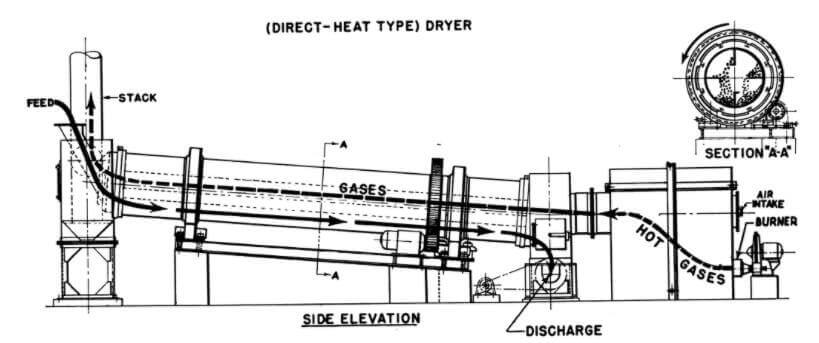
O material a ser seco é empurrado para trás imediatamente pela placa do elevador quando entra no invólucro do tanque de alimentação e da calha de alimentação.
Como o secador está instalado no declive, o material flui para a extremidade traseira sob gravidade e força de rotação; enquanto isso, ele é repetidamente levantado pela placa e jogado para baixo de acordo, fazendo com que o material forme uma cortina uniforme e troque calor o suficiente dentro do fluxo de calor.
No final, a umidade na superfície e no interior do material é seca por dispersão repetida.
Tipos de máquinas de secar
Vivemos em um mundo onde quase todos os processos foram simplificados, e é por isso que você está certo em esperar que existam diferentes tipos de secadoras.
Nesta seção, discutiremos os diferentes tipos de máquinas de secar. Lembre-se de que nosso foco principal é a máquina de secar rotativa, mas ainda é necessário examinar os diferentes tipos de secadores disponíveis.
Os princípios por trás do funcionamento da secadora rotativa também se aplicam a qualquer um dos secadores que discutiremos nesta seção.
Você encontrará alguns problemas de cálculo em alguns casos porque as condições podem mudar quando os sólidos de secagem e o ar se movem junto com o secador.
No entanto, isso não deve preocupá-lo, porque você pode manobrar seus caminhos depois de conhecer os princípios dos balanços de calor e massa.
Dito isso, vamos examinar alguns dos diferentes tipos de máquinas de secar, certo?
1. Secadores Rotativos
Os secadores rotativos são máquinas de secagem que visam reduzir o teor de umidade em qualquer material. Eles consistem em tubos cilíndricos que são suportados por vigas de aço ou colunas de concreto.
Para começar a usar uma secadora rotativa, você precisará jogar o material que deseja secar no tambor da secadora rotativa. Feito isso, o material será empurrado da ponta alta para a ponta baixa para aumentar seu contato com o ar de secagem.
Tipos de secadores rotativos
Existem muitos secadores, mas também temos algumas classificações de secadores rotativos:
- Secador de tubo de vapor indireto
- Secador direto Roto-Louvre
- secador rotativo direto
- calcinador rotativo indireto
- forno rotativo direto
Dos outros tipos de secadores rotativos listados acima, o mais popular é o secador rotativo direto. Os outros são apenas conhecidos por existirem, mas pouco foi publicado sobre eles.
2. Secadores de túnel
A maioria das pessoas presumirá que os secadores de túnel são desenvolvimentos dos secadores de bandeja e podem estar certos. Ao secar materiais usando um secador de túnel, o material se moverá paralelamente ao fluxo de ar. Você pode perceber que os secadores foram divididos, ou os fluxos cruzados estão sendo usados em alguns casos.
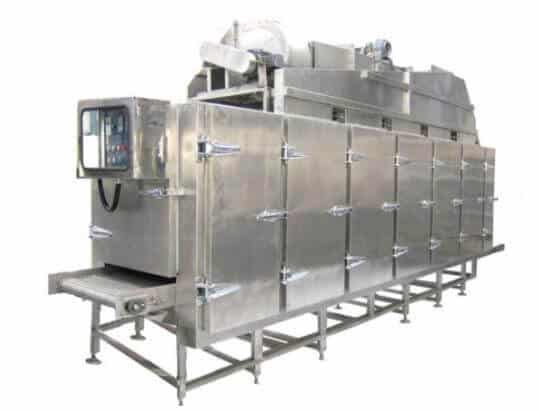
3. Secadores de rolo ou tambor
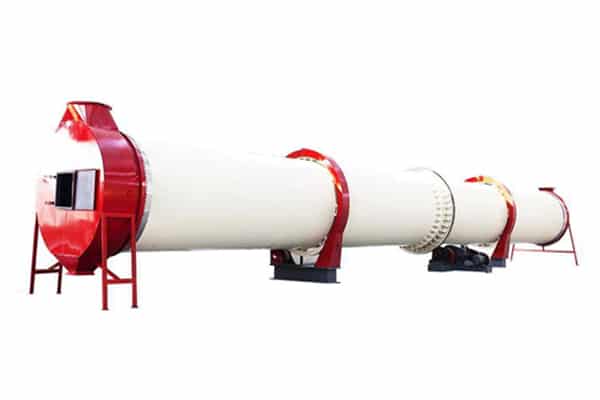
Nos secadores de rolo ou tambor, o material é colocado na superfície aquecida do tambor e o tambor começa a girar. À medida que o tambor gira, o material será aplicado no tambor do secador a cada ciclo. O material permanecerá no tambor durante o processo de rotação conforme ocorre a secagem. Dito isto, a secagem em tambor também pode ser chamada de secagem por condução.
4. Secadores de leito fluidizado
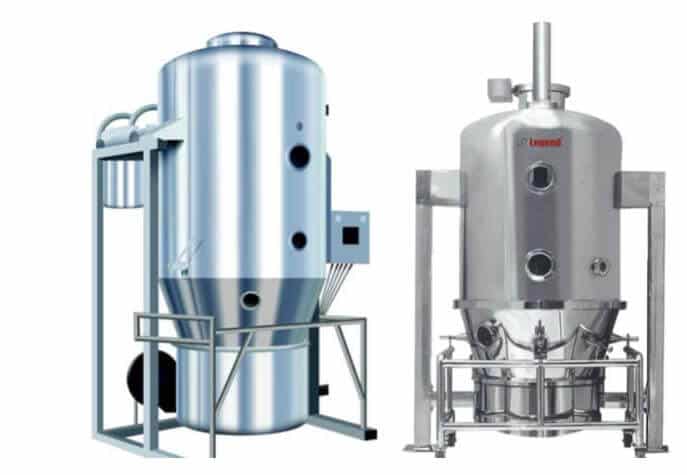
Ao usar os secadores de leito fluidizado, o material que está sendo seco ficará suspenso contra a força gravitacional. Em alguns casos, o fluxo de ar horizontal pode ser aplicado para mover o material pelo secador. Durante esse processo, o material recebe o calor por convecção, tornando-o seco.
5. Secadores por Pulverização
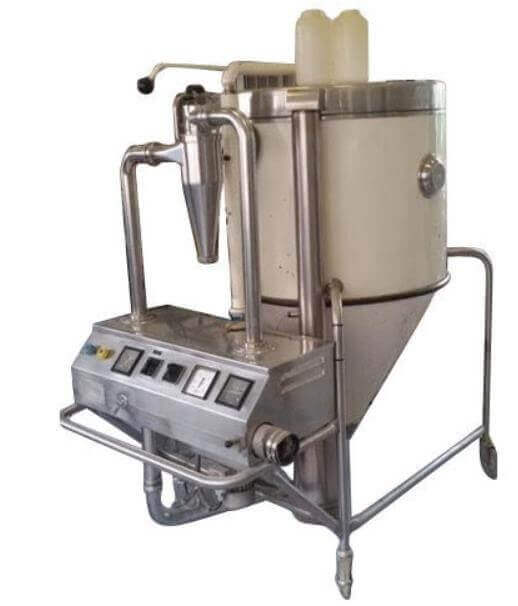
Ao usar os secadores por pulverização, pulverize o líquido no ar aquecido, no qual os sólidos e o ar se moverão em direções paralelas ou em contrafluxo.
Os materiais de secagem por pulverização secam muito rapidamente, por isso é um tipo de máquina de secagem que será útil para materiais que podem ser danificados rapidamente quando expostos ao calor por mais tempo.
A beleza dos secadores por pulverização é que os materiais secos assentarão durante a secagem sem que entrem em contato com as paredes do secador, evitando que grudem.
6. Secadores Pneumáticos
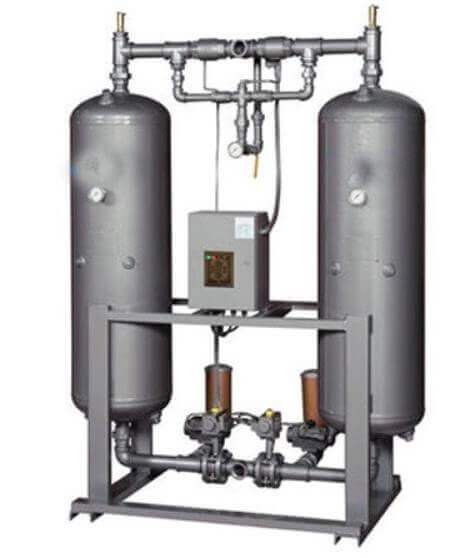
Ao usar o secador pneumático, os materiais serão movidos rapidamente em uma corrente de ar enquanto as correntes de ar mantêm os materiais em suspensão. O ar aquecido é responsável por secar o ar, mas algum tipo de dispositivo de classificação está incluído no secador. O material é seco e separado no classificador, depois passado para fora, enquanto as partes úmidas do material são recirculadas para posterior secagem.
7. Secadores de bandeja
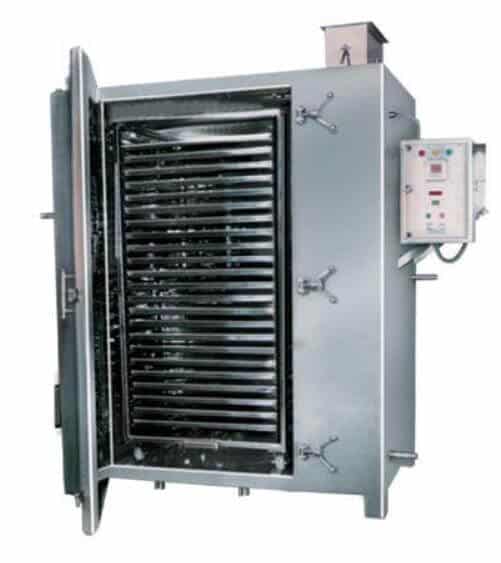
Um secador de bandeja é uma máquina de secagem com bandejas e câmaras fechadas e isoladas umas sobre as outras, formando um carrinho. Secadores de bandeja, os materiais que estão sendo secos são colocados em bandejas onde são secos. A secagem dos materiais ocorre por meio de correntes de ar passando pelas bandejas ou por radiação.
8. Secadores de Calha
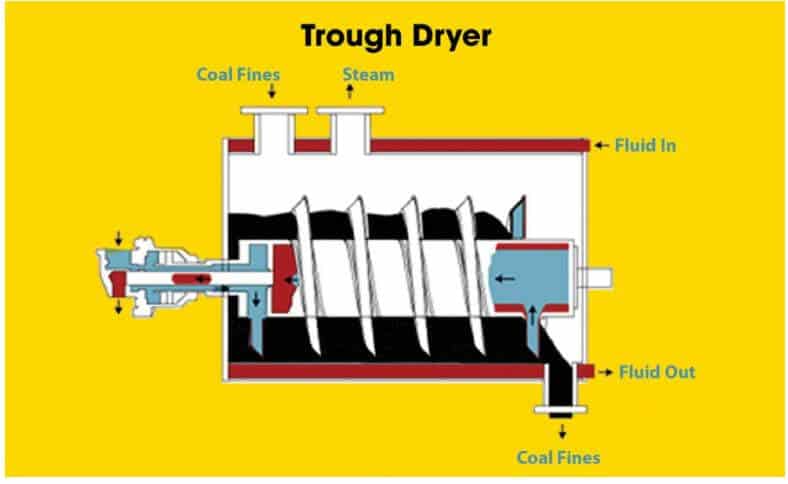
Os secadores de calha são adequados para a secagem rápida de peças que foram limpas e enxaguadas. Uma vez que os elementos de aquecimento estejam aquecidos, eles passam pelos dutos até as seções que precisam ser secas. Os secadores agressivos podem secar rápida e intensamente, especialmente ao secar materiais com umidade aderente.
9. Secadores de Caixas
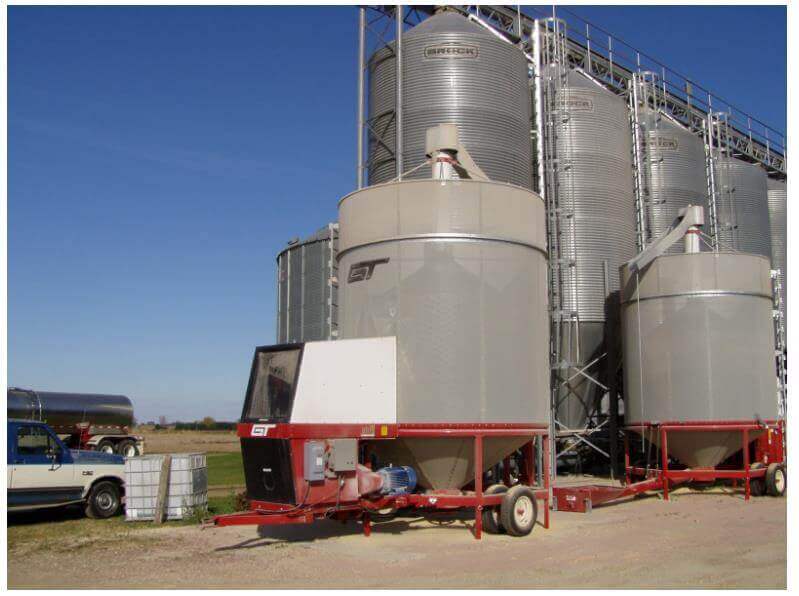
Os secadores de escaninho são um dos secadores mais simples de operar. Esses secadores vêm com piso perfurado e sopradores que auxiliam na movimentação do ar ao longo do grão. Se o grão tiver 22% ou menos de umidade, ele pode ser seco apenas com ar ambiente, desde que haja fluxo de ar adequado.
10. Secadores de Esteira
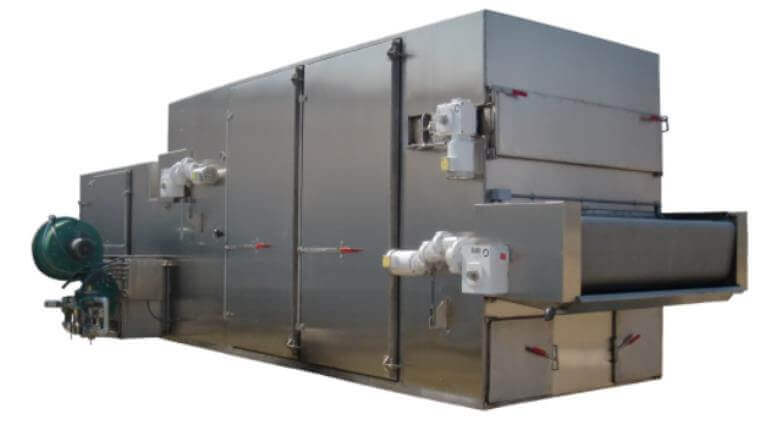
Os secadores de esteira são máquinas bastante úteis quando você precisa secar e resfriar continuamente materiais, como painéis, lascas de madeira, compostos moldados, pastas e paletes usando ar, gás de combustão ou mesmo gás inerte.
11. Secadores a Vácuo
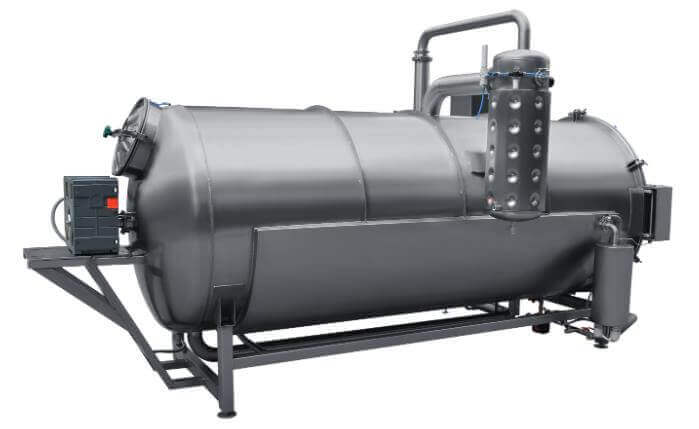
Os secadores a vácuo são quase iguais aos secadores de bandeja, exceto que esses secadores usam o vácuo e a transferência de calor é por radiação ou condução. As bandejas dos secadores a vácuo são sempre montadas em um grande armário, e o vapor de água gerado é condensado. Após a condensação do vapor d'água, as bombas trarão apenas os gases não condensáveis.
12. Liofilizadores
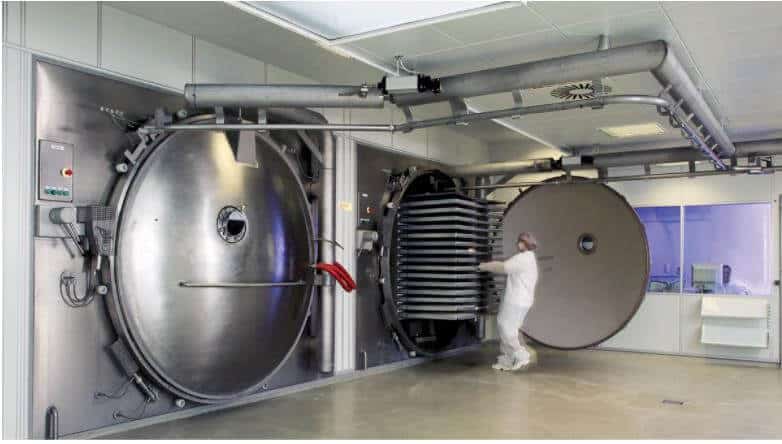
Os liofilizadores também são conhecidos como liofilizadores. Esses secadores ajudam no congelamento de materiais, reduzindo a pressão e adicionando um pouco de calor para dar espaço para o material que você está congelando para sublimar.
Fornos rotativos vs. Secadores rotativos: qual é a diferença?
A maioria das pessoas costuma confundir entre um forno rotativo e um secador rotativo. Claro, ambas as máquinas compartilham os mesmos princípios de funcionamento, mas são diferentes quando se trata de onde são usadas. Os fornos rotativos podem secar, mas são mais adequados para aquecimento e não para secagem.
Os secadores rotativos são adequados para a secagem de materiais. Eles podem operar entre temperaturas que variam de 800 graus a 1400 graus F. Os fornos rotativos, ao contrário, causam reações químicas e, por isso, operam em temperaturas muito altas, variando entre 1000 graus e 3000 graus.
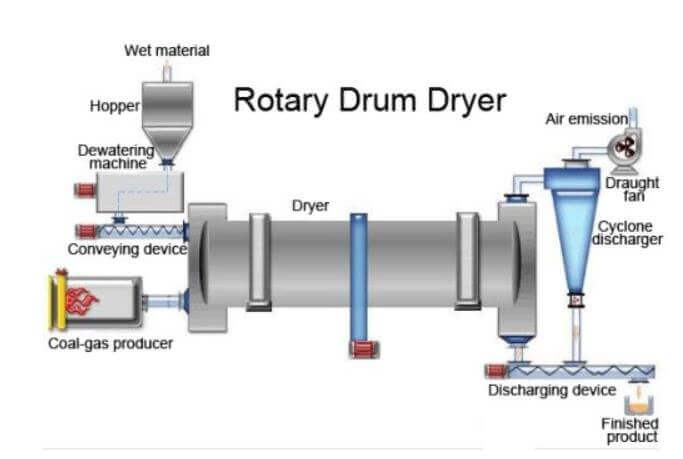
Dito isto, os fornos rotativos são construídos para suportar temperaturas muito mais altas do que os secadores rotativos. Se você estiver usando um forno rotativo de queima direta, perceberá que ele é revestido com revestimentos moldáveis ou refratário revestido com tijolo. Por outro lado, os secadores rotativos não são revestidos e não suportam temperaturas mais altas. No entanto, você precisa observar que os fornos rotativos indiretos geralmente não são revestidos. Isso significa que a carcaça do tambor será construída com uma liga resistente à temperatura, em vez de aço.
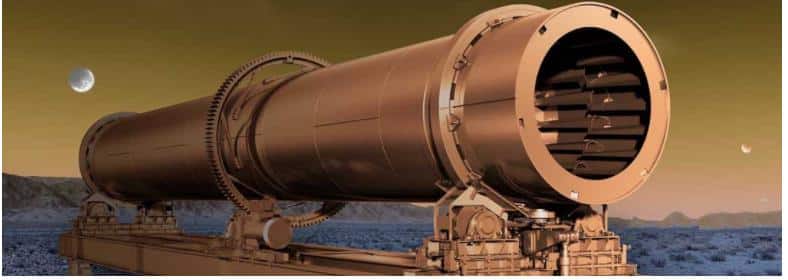
Antes de comprar um forno rotativo ou uma secadora rotativa, você precisa determinar o que fará com qualquer um deles. Se você está ansioso para secar qualquer um dos seus materiais, um secador rotativo será de grande ajuda. Se você estiver procurando por equipamentos que causem reações químicas e aqueçam seus materiais, um forno rotativo servirá a esse propósito.
Diferença entre o secador rotativo e o secador centrífugo
Naquela época, secadores rotativos e secadores centrífugos eram quase a mesma coisa. Até recentemente, algumas empresas começaram a construir secadores com secadores rotativos e secadores centrífugos. Embora essa combinação tenha tornado a secagem mais prática e precisa, ainda há alguma confusão que precisamos esclarecer.
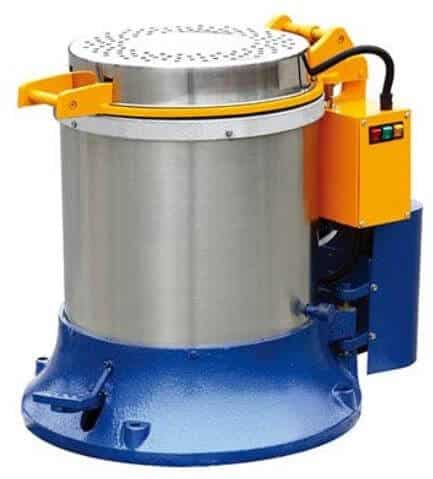
Os secadores rotativos consistem em tambores rotativos e possuem instalações de aquecimento separadas. Por outro lado, os secadores centrífugos utilizam vapor superaquecido e seco para secar materiais.
Benefícios de usar um secador rotativo
Hoje, as indústrias contam com secadores rotativos para ajudar na secagem consistente e de alta capacidade dos materiais. E não é surpresa que as indústrias agora usem secadores rotativos mais do que nunca.
Os secadores rotativos oferecem muitos benefícios, especialmente quando você está processando sólidos. Abaixo estão algumas das razões pelas quais você deve escolher secadores rotativos para ajudá-lo no processamento de sólidos a granel:
1. Recursos de processamento personalizados
Claro, você ainda pode obter secadores rotativos de tamanho único, mas a maioria dos secadores rotativos é personalizada para aumentar a eficiência do processamento.
Por exemplo, você pode criar especificações exclusivas e tentar ajustar seus objetivos gerais para obter o melhor de seu secador rotativo. É essencial enfatizar que diferentes características do material podem influenciar como um material se comportará ao ser seco.
Além disso, as características do material afetarão o projeto do secador, garantindo assim a satisfação do processamento térmico. Quando você deseja projetar um secador rotativo, lembre-se do seguinte:
- A umidade da matéria-prima
- O objetivo da umidade de saída
- O calor atual do material que você deseja processar
- As propriedades do material que você está processando
- As deficiências do material que você está processando – fragilidade, partículas, etc.
- A qualidade da superfície do material.
É essencial observar que o desempenho de um secador pode ser influenciado por fatores específicos do local, e é por isso que você também deve levar isso em consideração. Alguns desses fatores podem incluir temperaturas ambientes, nível de umidade e elevação.
Existem muitos componentes que você pode personalizar para atender às suas necessidades de processamento. Por exemplo, vários fatores afetarão o funcionamento do seu secador e até mesmo o objetivo geral. Esses fatores incluem preenchimento percentual, configuração do fluxo de ar, tamanho, padrão e tempo de retenção. Você também pode fazer alguns ajustes, como selar as opções, derrubar os sistemas para melhorar a eficiência da secagem.
2. Você pode criar um produto refinado
Se você pretende secar materiais, como grânulos ou pellets, os secadores rotativos oferecerão muitos benefícios do que quando você usa outros secadores. A ação de tombamento é o processo crítico porque dá polimento aos grânulos enquanto solta as bordas para produzir um produto mais refinado.
3. Processamento Pesado
Os secadores rotativos são saudáveis e vêm com um design resistente. Certamente, os secadores rotativos podem ser úteis quando você deseja processar materiais mais refinados, mas são mais adequados para o processamento de materiais pesados.
Por causa disso, a maioria dos materiais processados usando um secador rotativo inclui minérios, potássio, calcário, fosfatos, minerais e gesso. O melhor de tudo é que os secadores rotativos podem durar muito tempo antes de serem substituídos ou reparados.
4. Processamento Consistente
Além do fato de que os secadores rotativos podem lidar com processamento pesado, há também outra razão pela qual eles são tão populares. Os secadores rotativos podem processar consistentemente produtos de alta qualidade, mesmo que haja inconsistências no processo.
As taliscas no tambor rotativo são responsáveis por levantar e espalhar o material em cascata para minimizar aglomerados de material e garantir que haja uma secagem uniforme do material. O melhor de tudo é que eles podem pegar o que está disponível – seja uniforme ou grumoso, seco ou úmido, mas ainda assim acabam com um produto de qualidade.
5. Alta capacidade
Como os secadores rotativos ocupam um espaço maior do que seus predecessores, eles fornecem capacidades significativamente maiores. Os secadores rotativos podem fornecer acomodações de apenas 1 tonelada por hora, até 200 toneladas por hora. Por esta razão, o processamento de alta capacidade é essencial em muitas condições de processamento.
6. Redução de Energia
Menos energia é normalmente essencial em secadores rotativos em comparação com outras opções de secagem, como secadores de leito fluidizado. Além disso, eles oferecem a chance de reduzir os custos de energia enquanto operam em capacidades mais baixas. Por exemplo, secadores de leito fluidizado precisam de certa quantidade de energia, mesmo quando trabalham em graus reduzidos.
Isso ocorre porque requer uma certa quantidade de energia para fluidificar a substância. O consumo de energia também é minimizado com um secador rotativo sem interferir no processo em capacidades reduzidas.
Com um secador rotativo, a eficiência da transferência de calor é aprimorada por meio de lâminas de elevação. Uma vez que o voo de levantamento pega o material, ele o libera para a corrente de ar, criando uma proteção de material enquanto o tambor gira. Enquanto isso, exibir o material para o fluxo de ar refina o nivelamento da umidade e da secagem.
7. Facilidade de Desempenho
Os secadores rotativos fornecem operação manual relativa. Embora seja necessário monitorar um secador rotativo, uma ou duas coisas podem causar transtornos ao operar um secador rotativo. Além disso, existem algumas variáveis que precisam ser modificadas para facilitar o desempenho.
8. Alternativas de aquecimento direto e indireto
A maioria dos secadores rotativos é de queima direta, o que significa que o material e o ar de secagem entram em contato direto um com o outro. No entanto, quando o material processado não deve entrar em contato direto com o ar de secagem, os secadores rotativos de queima indireta entram em ação para fornecer uma solução de pré-processamento eficaz.
Já nos secadores de aquecimento indireto, o tambor é aquecido externamente, e o material é seco por meio do contato com a carcaça do tambor. Isso evita qualquer conexão direta entre o material e o ar de secagem. Um secador indireto é útil quando o trânsito de material ultrafino é uma preocupação.
Perguntas Frequentes
1. O que devo observar ao comprar uma secadora?
Caracteristicas essenciais. Isso inclui sensores de secador ou umidade do secador que regula o tempo de secagem necessário. Ele também permite selecionar opções personalizadas com benefícios semelhantes para ajudar a reduzir o tempo de secagem e o consumo de energia. O gerenciamento de temperatura também facilitará o processo de secagem de alguns tecidos, incluindo penugem para tecidos delicados.
2. Vale a pena consertar uma secadora?
A máquina de secar normalmente dura até 13 anos. Para aumentar a vida útil da secadora, certifique-se de limpar o coletor de fiapos e a ventilação externa após cada uso.
Se um secador for relativamente novo, vale a pena consertá-lo. Dessa forma, você pode prolongar a vida útil do seu secador e economizar dinheiro eventualmente. Por exemplo, pode valer a pena gastar até $ 200 para consertar um secador de médio porte com menos de cinco anos de desempenho.
Se o seu secador estiver se aproximando de dez anos de desempenho, é melhor substituí-lo, mesmo que você ainda não tenha encontrado nenhum problema significativo.
3. Como você sabe quando a secadora está desligando?
- Se o tambor não estiver girando, mas a secadora funcionar quando ligada, você pode estar tendo problemas com a correia.
- Fornecimento insuficiente de calor.
- A secadora não está ligando.
- Ruídos de batidas que podem ser irritantes.
- Um som de trituração ou guincho é produzido.
- O secador encrava no meio do ciclo.
4. O que faz com que o elemento de aquecimento se apague na secadora?
Um componente de aquecimento do secador funciona com a mesma técnica que a bobina em um aquecedor elétrico. Se a bobina superaquecer, ela queima. Outras condições que podem fazer com que o elemento de aquecimento pare incluem fluxo de ar inadequado no compartimento de aquecimento, oscilação de energia e falha dos dispositivos de segurança.
Apresentando a Máquina Secadora Rotativa Tcpel
Agora que você já sabe mais sobre o que são secadores rotativos, como funcionam e algumas das vantagens, provavelmente quer conhecer alguns dos melhores secadores rotativos do mercado, certo?
A máquina secadora rotativa para pelotização Tcpel é um dos melhores secadores rotativos que já vimos. Este secador é útil na agricultura ao lidar com tarefas de criação de animais, entre outras.
Você pode usar o Máquina secadora rotativa para moinho de pelotas Tcpel para secar itens como serragem, cavaco de madeira, palha de algodão, palha de soja, palha de trigo, colmo de sorgo, folhas de amoreira, entre outros.
Mas isso não é tudo sobre o secador rotativo Tcpel Pellet Mill; abaixo estão algumas características exclusivas da nossa máquina de secar rotativa:
Quais são suas características únicas?
- Melhor para secagem de biomassa, fertilizante, pó de ração animal
- Acompanha tambor rotativo que auxilia na secagem de materiais com alta umidade, como palha de serragem, rações de milho, adubo de cereais, etc.
- Você pode controlar o tambor do secador, dependendo da umidade da matéria-prima. Umidade mais alta exige uma velocidade de alimentação mais baixa.
- Ele vem com equipamento de ajuste de temperatura para ajudar a ajustar a temperatura do ar quente.
- Este secador rotativo vem com placas de levantamento de vários ângulos para ajudar a levantar o material uniformemente.
ponto de partida
Os secadores rotativos são o pilar de muitas operações industriais avançadas para envolvê-lo, ajudando a aliviar o teor de umidade dos produtos processados enquanto prepara materiais para processamento aprimorado. Além disso, eles são benéficos tanto para seus produtos finais quanto para o próprio processo. Os secadores rotativos estão disponíveis em modelos de regimento, mas podem ser adaptados para atender às características excêntricas do material em processamento para fornecer os resultados mais eficientes.
Fale com um especialista
COMPARTILHE ESTA POSTAGEM
Fale com um especialista
